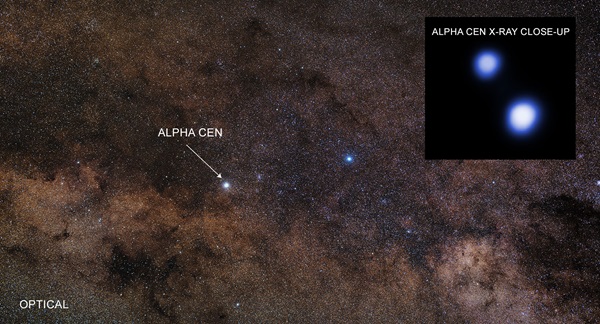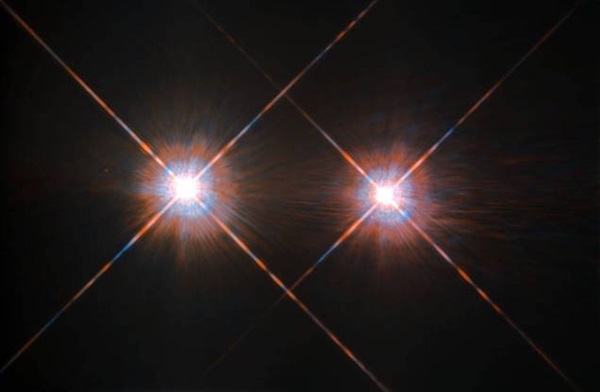In the study, NASA’s Chandra X-ray Observatory observed the three stars of Alpha Centauri, which sits just 4 light-years from Earth, twice a year since 2005. In an effort to determine the habitability of any planets within their orbits, Chandra monitored the amount of X-ray radiation that each star emitted into its habitable zone. An excess of X-ray radiation can wreak havoc on a planet by dissolving its atmosphere, causing harmful effects for potential residents, and creating destructive space weather that could mess with any technology possibly in use. But thankfully, the potential planets orbiting two of the three stars don’t have to worry any of that. In fact, these stars might actually create better planetary conditions than our own Sun.
“Because it is relatively close, the Alpha Centauri system is seen by many as the best candidate to explore for signs of life,” said study’s author, Tom Ayres of the University of Colorado Boulder, in a press release. “The question is, will we find planets in an environment conducive to life as we know it?”
The three stars that make up Alpha Centauri aren’t exactly created equal, with some more hospitable to life than others. The two brightest stars in the system are a pair known as Alpha Cen A and Alpha Cen B (AB for short), which orbit each other so closely that Chandra is the only observatory precise enough to differentiate their X-rays. Farther out in the system is Alpha Cen C, known as Proxima, which is the closest non-Sun-like star to Earth. The AB pair are both remarkably similar to our Sun, with Alpha Cen A almost identical in size, brightness, and age, and Alpha Cen B only slightly smaller and dimmer.
“This is very good news for Alpha Cen AB in terms of the ability of possible life on any of their planets to survive radiation bouts from the stars,” Ayres said. “Chandra shows us that life should have a fighting chance on planets around either of these stars.”
Proxima is a different story, though. It’s a significantly smaller red dwarf that emits about 500 times more X-ray radiation into its habitable zone than Earth receives from the Sun, and can radiate 50,000 time more during the massive X-ray flares that it’s known to hurl into space. While the AB duo’s X-ray radiation isn’t a threat to life, the massive dose expelled by Proxima definitely is.
And as luck would have it, the only exoplanet that’s been identified in Alpha Centauri is orbiting uninhabitable Proxima. Researchers haven’t given up hope, though. They continue to search for exoplanets around the AB pair, although their tight orbit makes it difficult to spot anything in between the two. But even if the search continues to turn up empty, Chandra’s extensive investigation will help researchers study the X-ray radiation patterns of stars similar to our Sun, allowing us to pinpoint any potential threats to Earth. And if we do come across planets orbiting these two stars, we might just find signs of life in our own backyard.











